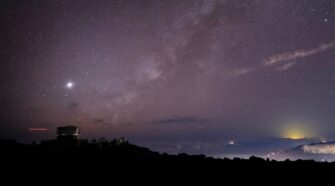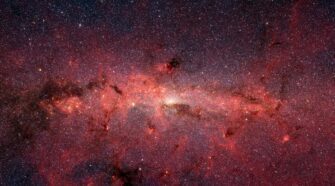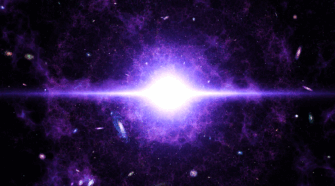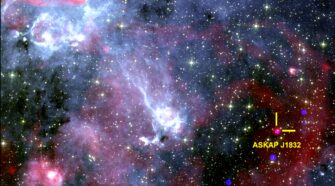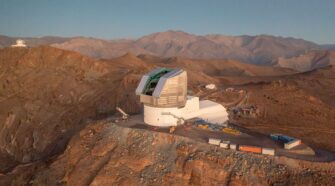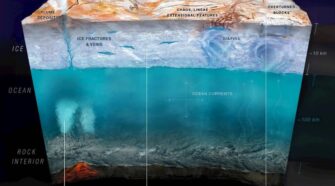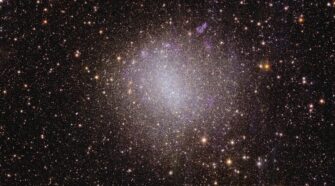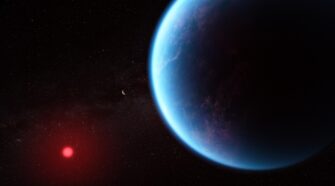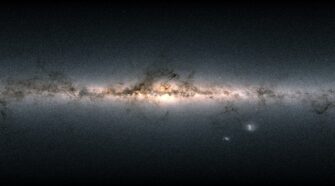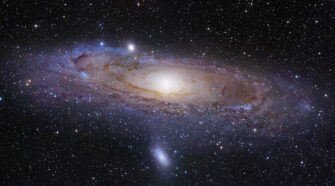Universe
Another puzzling interstellar object spotted whizzing through solar system
Astronomers manning an asteroid warning system caught a glimpse of a large, bright object zipping through the solar system late on July 1, 2025. The object’s potentially interstellar origins excited scientists across the globe, and the next morning, the European Space Agency confirmed that this object, first named A11pl3Z and then designated 3I/ATLAS, is the …
Where is the center of the universe?
About a century ago, scientists were struggling to reconcile what seemed a contradiction in Albert Einstein’s theory of general relativity. Published in 1915, and already widely accepted worldwide by physicists and mathematicians, the theory assumed the universe was static – unchanging, unmoving and immutable. In short, Einstein believed the size and shape of the universe …
Unravelling the mystery behind the Big Bang birth of the universe
How did everything begin? It’s a question that humans have pondered for thousands of years. Over the last century or so, science has homed in on an answer: the Big Bang. This describes how the Universe was born in a cataclysmic explosion almost 14 billion years ago. In a tiny fraction of a second, the …
X-rays reveal a mysterious cosmic object never before seen in galaxy
In a new study published recently in Nature, we report the discovery of a new long-period transient – and, for the first time, one that also emits regular bursts of X-rays. Long-period transients are a recently identified class of cosmic objects that emit bright flashes of radio waves every few minutes to several hours. This …
Rubin Observatory assembling the most complete time-lapse record of the universe
On 23 June 2025, the world will get a look at the first images from one of the most powerful telescopes ever built: the Vera C. Rubin Observatory. Perched high in the Chilean Andes, the observatory will take hundreds of images of the southern hemisphere sky, every night for 10 years. In doing so, it …
New model helps to figure out which distant planets may host life
The search for life beyond Earth is a key driver of modern astronomy and planetary science. The U.S. is building multiple major telescopes and planetary probes to advance this search. However, the signs of life – called biosignatures – that scientists may find will likely be difficult to interpret. Figuring out where exactly to look …
Extraordinary evidence needed to claim discovery of extraterrestrial life
The detection of life beyond Earth would be one of the most profound discoveries in the history of science. The Milky Way galaxy alone hosts hundreds of millions of potentially habitable planets. Astronomers are using powerful space telescopes to look for molecular indicators of biology in the atmospheres of the most Earth-like of these planets. …
Potential sign of life found on a distant planet and why many are still skeptical
A team of astronomers announced on April 16, 2025, that in the process of studying a planet around another star, they had found evidence for an unexpected atmospheric gas. On Earth, that gas – called dimethyl sulfide – is mostly produced by living organisms. In April 2024, the James Webb Space Telescope stared at the …
Gaia telescope ends mission to create 3D map of Milky Way
On Thursday 27 March, the European Space Agency (ESA) sent its last messages to the Gaia Spacecraft. They told Gaia to shut down its communication systems and central computer and said goodbye to this amazing space telescope. Gaia has been the most successful ESA space mission ever, so why did they turn Gaia off? What …
100 years ago Edwin Hubble settled astronomy’s ‘Great Debate’
A hundred years ago, astronomer Edwin Hubble dramatically expanded the size of the known universe. At a meeting of the American Astronomical Society in January 1925, a paper read by one of his colleagues on his behalf reported that the Andromeda nebula, also called M31, was nearly a million light years away – too remote …

